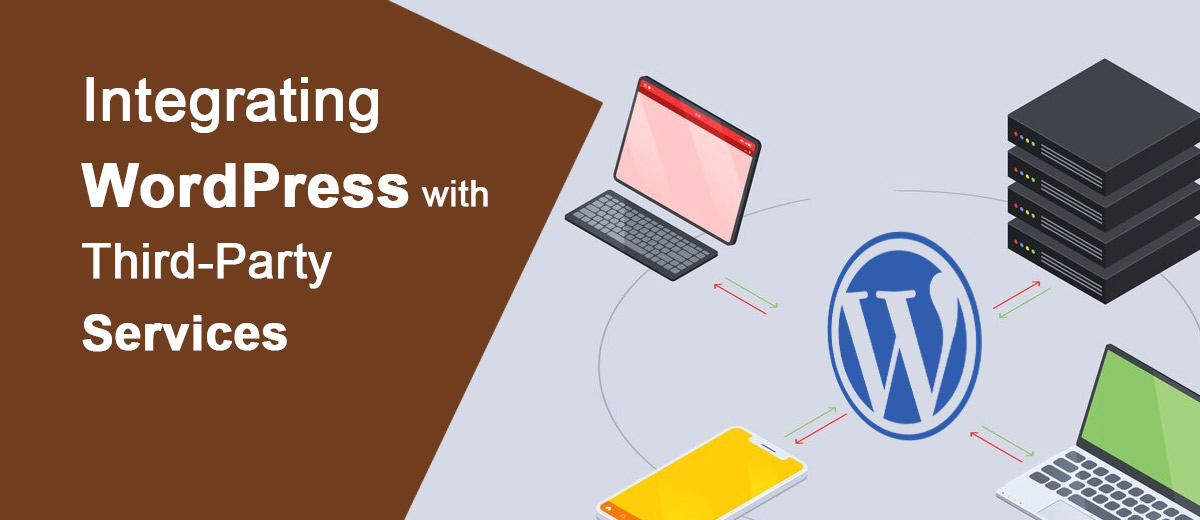WordPress, the popular content management system, empowers millions of websites worldwide. Its flexibility and extensive plugin ecosystem allow site owners to enhance functionality and features. One powerful aspect of WordPress is its ability to integrate seamlessly with third-party services, enabling users to connect their websites with various platforms for added functionality, data synchronization, and improved user experiences. In this comprehensive guide, we will explore the benefits of integrating WordPress with third-party services and provide a step-by-step walkthrough on connecting your site with other platforms.
Why Integrate WordPress with Third-Party Services?
1. Extended Functionality:
Integrating third-party services extends the capabilities of your WordPress site. You can leverage specialized tools for e-commerce, marketing, analytics, social media, and more without reinventing the wheel.
2. Streamlined Workflows:
Integration simplifies tasks by automating processes. For example, connecting your e-commerce site with a payment gateway automates transaction processing, reducing manual efforts and enhancing efficiency.
3. Improved User Experience:
Third-party integrations can enhance the user experience on your website. For instance, integrating with social media platforms allows users to log in using their existing credentials, fostering a seamless and user-friendly experience.
4. Data Synchronization:
Integrations enable data synchronization between your WordPress site and external platforms. This ensures that information, such as user data or product inventory, remains up-to-date across different systems.
5. Better Analytics and Reporting:
Integrating analytics tools provides deeper insights into user behavior, website performance, and marketing efforts. You can track key metrics and make data-driven decisions for site optimization.
6. Marketing Automation:
Integrate your WordPress site with marketing automation tools to create targeted campaigns, manage leads, and nurture customer relationships efficiently.
Step-by-Step Guide to Integrating WordPress with Third-Party Services:
Step 1: Identify Your Integration Needs
Before integrating third-party services, identify your specific requirements. Determine the functionalities you want to enhance and the platforms you need to connect with.
Step 2: Choose Reliable Plugins or APIs
WordPress offers a variety of plugins to facilitate integrations. For popular services, check if there are dedicated plugins available. Alternatively, some services provide APIs for custom integrations.
Step 3: Install and Activate the Plugin
If using a plugin, install and activate it on your WordPress site. Navigate to the WordPress dashboard, go to “Plugins,” click “Add New,” and search for the relevant plugin. Install and activate it.
Step 4: Configure Plugin Settings
After activation, configure the plugin settings. This often involves providing API keys, authentication details, or other required information. Follow the plugin documentation for guidance.
Step 5: Test the Integration
Before deploying the integration live, conduct thorough testing. Ensure that data flows correctly between your WordPress site and the third-party service. Address any issues or misconfigurations.
Step 6: Monitor and Maintain
Regularly monitor the integration’s performance. Check for updates to the plugin or API and apply them promptly. Monitor analytics to ensure the integration continues to meet your site’s needs.
Examples of Common Integrations:
1. Social Media Integration:
- Purpose: Enhance user engagement and sharing.
- Tools: Use plugins or APIs to integrate with platforms like Facebook, Twitter, or Instagram.
2. E-commerce Integration:
- Purpose: Streamline online store operations.
- Tools: WooCommerce, Shopify, or Magento integrations for order processing and inventory management.
3. Payment Gateway Integration:
- Purpose: Facilitate secure online transactions.
- Tools: PayPal, Stripe, or Square integrations for payment processing.
4. Email Marketing Integration:
- Purpose: Automate email campaigns and lead nurturing.
- Tools: Mailchimp, Constant Contact, or HubSpot integrations for email marketing.
5. Analytics Integration:
- Purpose: Gather insights into website performance.
- Tools: Google Analytics or Matomo integrations for tracking and reporting.
Conclusion:
Integrating WordPress with third-party services is a powerful strategy to enhance your website’s functionality and provide a seamless user experience. By following the step-by-step guide and leveraging reliable plugins or APIs, you can unlock new capabilities, streamline workflows, and stay ahead in the dynamic online landscape. Whether you aim to boost e-commerce operations, implement marketing automation, or improve analytics, thoughtful integrations can elevate your WordPress site to new heights.


